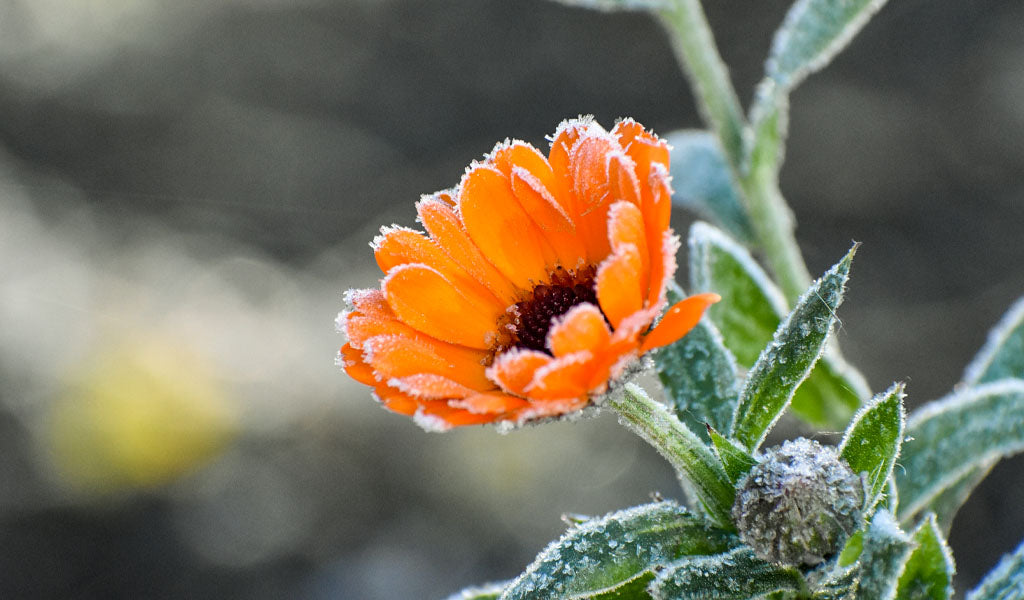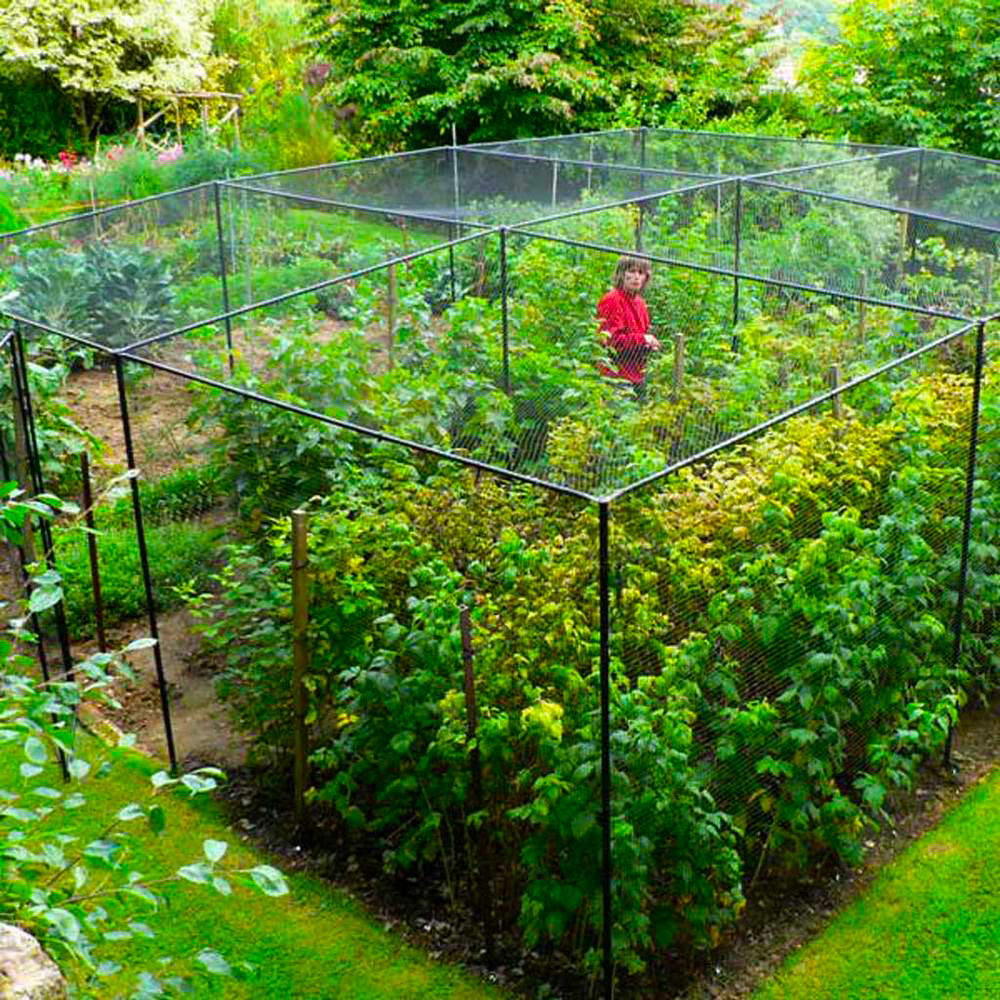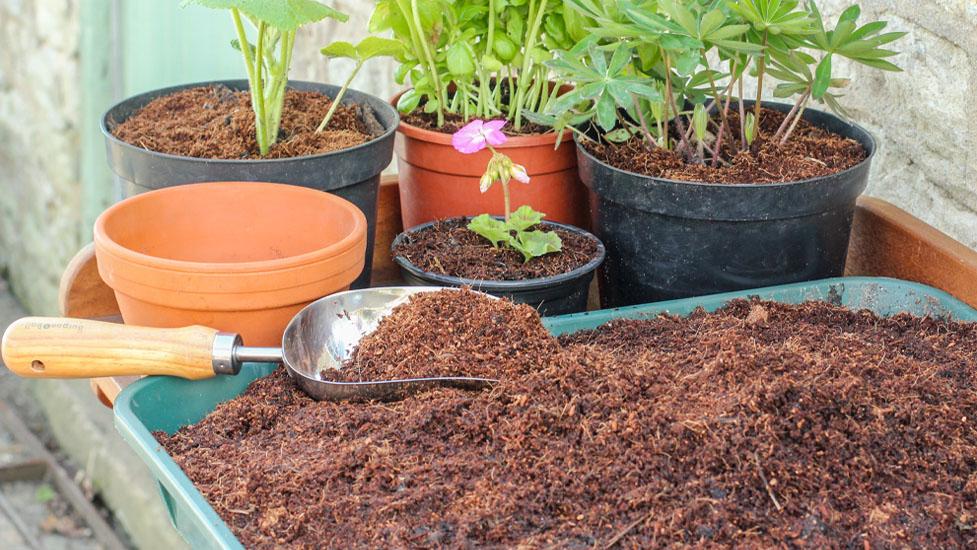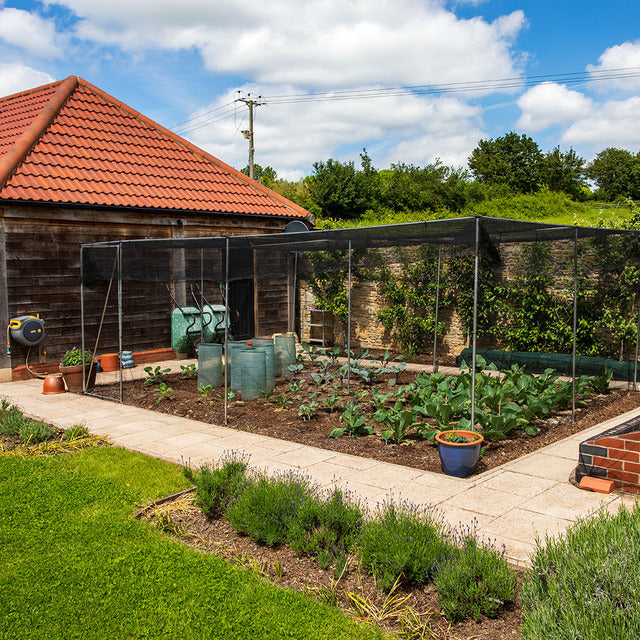February often brings the first signs that Spring is just around the corner, and yet it can still be bitterly cold. It's tempting to get a head start on the season as the days lengthen and the sun feels a little warmer, but a warm spell can be followed by freezing weather or torrential rain, which will damage early sowings and plantings - be ready to protect your seedlings.
This month you can very usefully spend time finishing off any trimming of dead growth, clipping back and general preparation for the new growing season.
Winter Digging
if you haven't done your winter digging yet now is the time to do it unless you garden on very wet ground, in which case, its best to wait until March or even April.
Order Plug Plants
There is a great range of patio plants available as plugs in garden centres from March right through the spring but if you order online early in winter you can often find a few more unusual vegetables, bedding and garden plants.

Make New Beds and Borders From Scratch
If you want to create new beds and borders on previously uncultivated land it is good to start preparing the ground as early in the season as possible, so the ground is in great condition by the time you're ready to start planting - prepare the soil now and you will reap the benefits later.
Skim the ground clear of whatever is currently growing on it such as weeds or grass and turn the ground over with a spade or fork a row at a time incorporating a generous amount of organic matter along the base of each furrow as you work, so it is buried as you dig your way across the area.
Keep lightly turning over the surface of the ground regularly every couple of weeks - this simple soil preparation kills off a lot of weeds and gets rid of soil pests the natural way by bringing the seeds to the surface and exposing them to the light - they start to germinate and then get reburied and weakened the next time you work the soil so you'll also be able to spot and remove bits of root as they start growing.
Cutting a New Bed In The Lawn
If you're cutting a new bed in a lawn don't dig in the turf - you might think it saves time but it just keeps regrowing - strip the turf off and stack it up in a corner of the garden to create homemade loam- a valuable by-product!
When you make new beds on ground that has previously been grass you are guaranteed to find soil pests such as leather jackets and wireworms. Where you'll be planting trees and shrubs they shouldn't be a problem as the roots are pretty tough but flowers and vegetables are likely to be damaged - the best solution is to fork the soil over several times to expose grubs to birds, hedgehogs and other beneficial wildlife who will enjoy a feed and be happy to act as free biological control - if you keep chickens and ducks they'll make short work of them.

Mow In Mild Weather
If the weather is mild you’ll find the grass is already growing - if you the ground is firm and the grass is fairly dry then you can go ahead and give it a light cut - Raise the mower blades up to the highest setting so that the grass is only lightly topped and has resilience to frost. Otherwise wait until conditions under foot are firmer and drier.
New Lawns
If you plan on making a new lawn this Spring wait until the ground has dried out before completing soil preparations or laying turf – lawns laid in cold and soggy weather rarely succeed.
Keep Off The Lawn
In February the very best thing you can do is to keep off the grass as much as possible - if you walk on it your boots may leave indentations that make the surface impossible to mow properly later. Equally ruts left by wheelbarrows cause ridges and dips – if you need to barrow across the lawn use an Easy Path to avoid the risk of damage.

Prune Clematis
February is Clematis pruning time for some varieties – all you need to know is roughly what type of clematis you have and when it flowers.
Which Clematis To Prune Now?
As a general rule Clematis species with flowers shaped like bells or cups less than 4 cm across don't have to be pruned at all - if they look a bit untidy tuck stems back into the body of the plant or use Wire to tie it in and train it a little to where you want it to go. If you do want to give them a light tidy up then the best time to do this is after flowering.
Species that flower early in the year shouldn’t be pruned now as you would be removing the flowering buds - use the tidy up technique above if needed.
If you have clematis of any kind growing up through trees or over an arbour or pergola there's generally no need to worry about pruning - just leave them alone.
The varieties that should be pruned now are those that don't start flowering until June and keep going until September - they make very vigorous growth and only flower on the very ends of the shoots so if you don't prune them now the flowers end up high out of sight. You can be bold and cut the whole plant down to 60 cm from the ground - it looks drastic but the plants will benefit and new shoots will start growing up strongly in another month or so.
Clematis that flower after July can be pruned very hard - cut back all growth now and new shoots will grow up vigorously from the base and produce flowers in the summer.
Clematis Montana makes an absolute mass of growth and doesn't need pruning unless it gets really out of hand then you can cut it back quite severely as soon as it's finished flowering – you may sacrifice flowers for a year or so.
Large flowered hybrids are easily recognised by their wide open saucer shaped flowers of 10cm or more. Those that flower in early and late summer with a break in between are best just tidied up - if you hard prune them you'll miss your early flowering. Cut back any untidy top growth to a fat pair of buds.

Introducing Early Colour To The Garden
The end of the winter sees the garden looking rather bare but this will all start to change next month - if you can’t wait and the weather is mild and the ground isn't soggy you can introduce splashes of colour into key places or in gaps between shrubs by planting out pots of the very earliest spring bulbs and Polyanthus as soon as they appear on sale in garden centres - leave it for a few weeks if conditions are not good as even the toughest plants will struggle!
Plant dormant crowns of Lily of the Valley between shrubs in well drained soil, enriched with plenty of organic matter - the plants will thrive in light dappled shade during the summer.
Spring bedding and container planting is best left until next month but as an alternative you can make the most of evergreens in containers for now or a pot grown spring flowering shrub which can be enjoyed in a planter or container temporarily before planting out in the garden later.
Keep an eye on containers planted for year round effect - even in wet weather tubs of shrubs or evergreens can dry out especially when they are close to a wall or fence - add top dressing to pots and containers to aid water retention and give them a well cared for look.

Planting Vegetables and Herbs
If you have a sunny sheltered spot with fertile well drained soil that has been dug with organic matter you can use it to start producing some early crops. Some specially developed varieties of vegetables and salads are suitable - normal summer varieties will just bolt or the seeds will rot if it's put into early.
Shallots
Plant shallots if the weather is mild and the soil is dry enough to work - you can plant onion sets just below the surface in well prepared and raked ground about 20cm apart.
Jerusalem Artichokes
The plants look like tall sunflowers but the edible parts are tubers that form on the roots during the Summer in late Autumn and can be harvested and stored to use as winter vegetable. They make an attractive and unusual screen to partition the veg patch off from your ornamental garden or you can plant them along an exposed vegetable patch to make an edible shelter belt - they make great soup!
Peas, Broad Beans, Radishes, Carrots & Turnips
Good choices include early Peas, Broad Beans, Lettuce varieties suitable for spring sowing such as Little Gem and varieties of Radish, Carrots and Turnips suitable for forcing.
Choose a fine day and fork the ground over and rake it well. Sow as usual in shallow drills water and cover the area with Fleece or use Easy Fleece Tunnel - it will be just enough to give a few degrees worth of insulation from cold and also shelters early crops from wind and hail, keeps the pigeons off your seedlings and lets light and rain through without having to keep taking it off and putting it back on except for weeding.
You can also cover seedlings with some Easy Seedling Tunnels to warm them up for a few weeks or longer if the weather is bad or to warm the soil if you're not ready to start planting.
Plant and Prune Soft Fruit and Trees
Continue planting soft fruit bushes, bare rooted fruit trees and summer fruiting Raspberry canes - If you can't find the bare root plants wait until spring to buy pot grown plants.
Finish winter pruning of standard bushes, apple and pear trees before the leaf buds burst in mid March.
Autumn Fruiting Raspberries
The canes only grow just over 1m tall which means you can leave them to spread in a bed approximately half a metre square which will be packed solidly with short stocky raspberry canes - a good use of space and very productive.
If you want to grow Autumn fruiting raspberries you can sometimes buy potted plants in the garden centre but most people order bare root canes through the post for delivery during the winter. If the soil is too wet when they're delivered stand the roots in a tub of potting compost to stop them drying out until conditions are suitable but do get them in before the start of the growing season around mid March.
Prepare the ground as usual and plant the canes 30 cm apart in rows 60 cm apart - if the plants arrived with long stems prune them down to the ground level immediately after planting.
If you already grow autumn fruiting raspberries the only thing you must do now is prune them – it couldn’t be simpler - cut all the fruited canes down to about 2 cm above ground level no later than the end of February. Pull out any weeds and while the ground is clear take the opportunity to mulch the bed thickly with well rotted compost - in another four weeks from now the new shoots will be pushing through and you don't want to risk damaging them then.
Protect Strawberries
Strawberries are great in containers or growing in the ground and by covering them with Fleece or Easy Fleece Jacket for protection from cold and wind you can encourage them to flower and fruit earlier than usual. Don't forget to water them when necessary and uncover them when the first flowers start opening otherwise insects won't be able to reach them for pollination.
Prepare The Greenhouse
A rainy day in February is perfect for preparing the greenhouse for the start of the propagating season start by cleaning the inside of the glass which usually has a light film of algae even if you cleaned well in the autumn - you'll need all the light that's going at this time of year!
Scrub Out Pots and Seed Trays
Scrub clean anything you'll be using for growing seeds - good hygiene is vital to avoid disease. Don’t forget to wash out your watering cans too and if you save rainwater in a water butt empty and scrub it out - all sorts of diseases and pests can live in dirty watering equipment.
Sow Vegetables In Pots
When bad weather or unsuitable soil conditions make it impossible to sow early vegetables straight outside into the garden - you can always raise plants under glass in Vigoroot Planters to plant outside when the conditions are better. Prick out seedlings as soon as they are big enough to handle with a Widger.
It’s always worth protecting greenhouse raised vegetables under a layer of Fleece for at least the first few weeks after you plant them out as they are used to warm sheltered condition.
Sow Lettuce, Leeks and Onions and Early Brassica
Sow the seeds thinly into pots of seed compost now – if you have a Propagator Set it will get them off to a good start but a Windowsill will also work well. When the seedlings are big enough to handle prick them out into trays or individual small pots - gradually lower the temperature to acclimatise them to the conditions in the greenhouse or cold frame. Keep them undercover in frost free conditions until they are big enough to plant out and the weather outside is mild and soil conditions suitable.
Grow Extra Early Potatoes
You can also grow extra early potatoes in planters using tubers chitted last month - these are well worth the effort - delicious to eat and you'll be picking your first crop in May. Growing potatoes in Patio Planters means that they are portable so if you need the space for something else you can move them outside once the risk of frost has passed. If you didn’t chit your early seedling potatoes last month there's still time to do it now.
Sow Early Peas and Broad Beans
Sow these seeds into Small Individual Pots or coir cells three peas or one bean to a pot (or 1.5cm apart in seed trays) pressing them down into the compost until they disappear. Stand the containers on the staging in a frost free greenhouse where the seeds germinate slowly - take precautions against mice who can't resist them!
Pea and bean plants are ready to go outside when they have filled their pots with roots but choose a mild spell when the soil is a good workable condition and don't risk putting them out while it's cold or wet.
Pot Up Stored Dahlia Tubers
Fill pots or boxes with potting compost in a frost free greenhouse to get them off to an early start - this is especially worthwhile doing with patio dahlias where you want them to start flowering as soon as possible after it's safe to put them outside. Several tubers can be fitted into a 15cm pot – the tuber should sit just below the surface of the compost.

With luck you’ll still be harvesting Brussels sprouts, sprouting broccoli and the last of the leeks just in time for the growing season to start all over again in a few weeks time!










Leave a comment